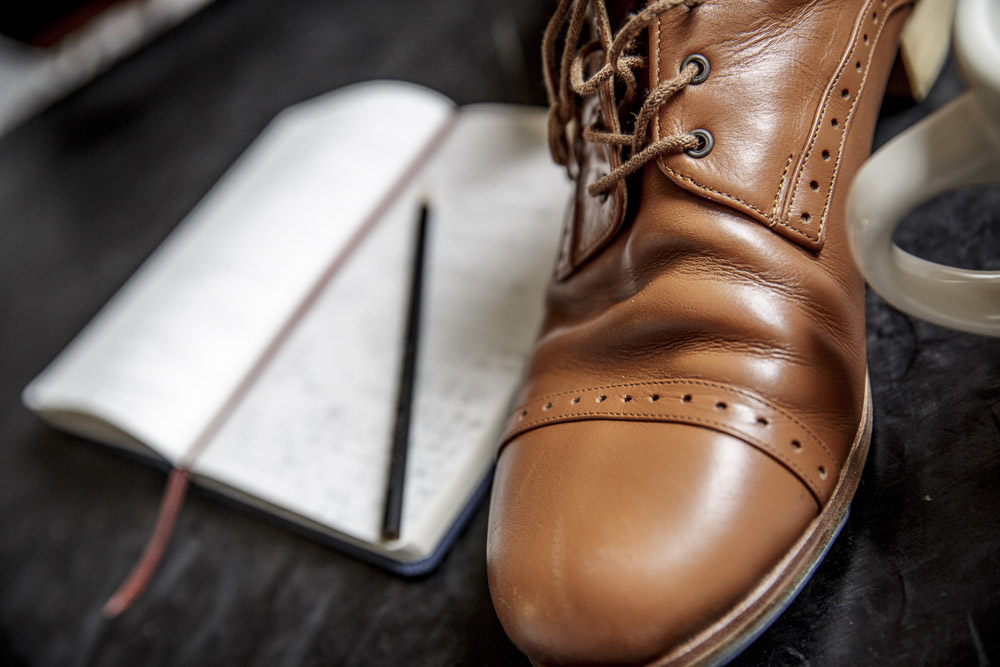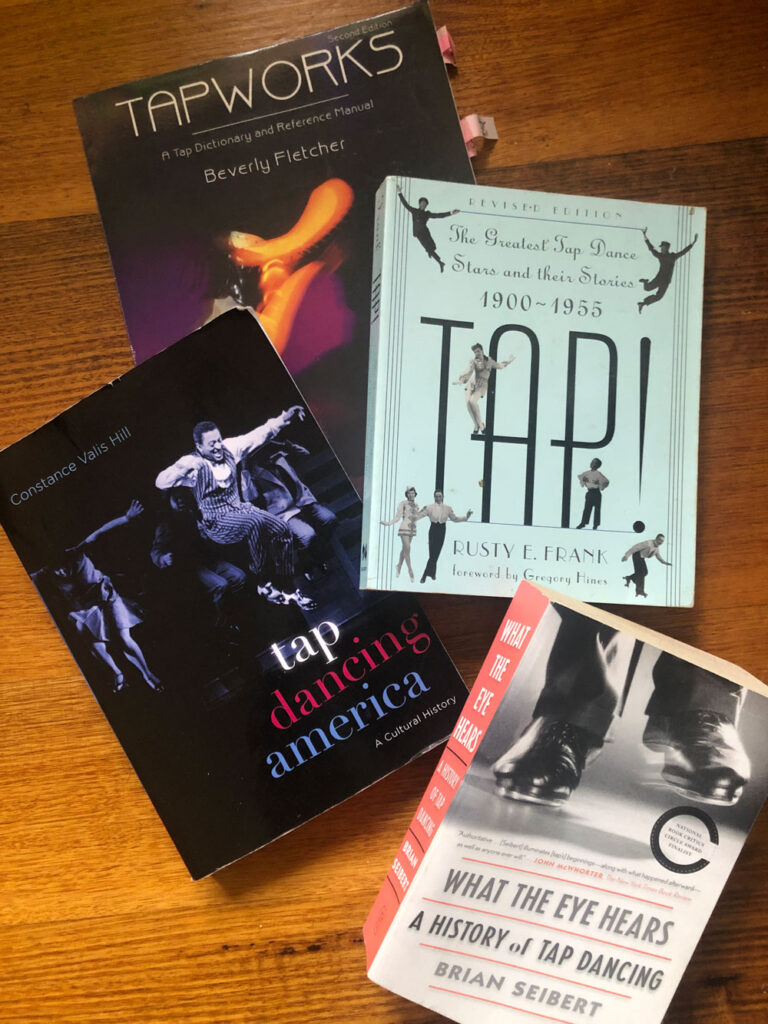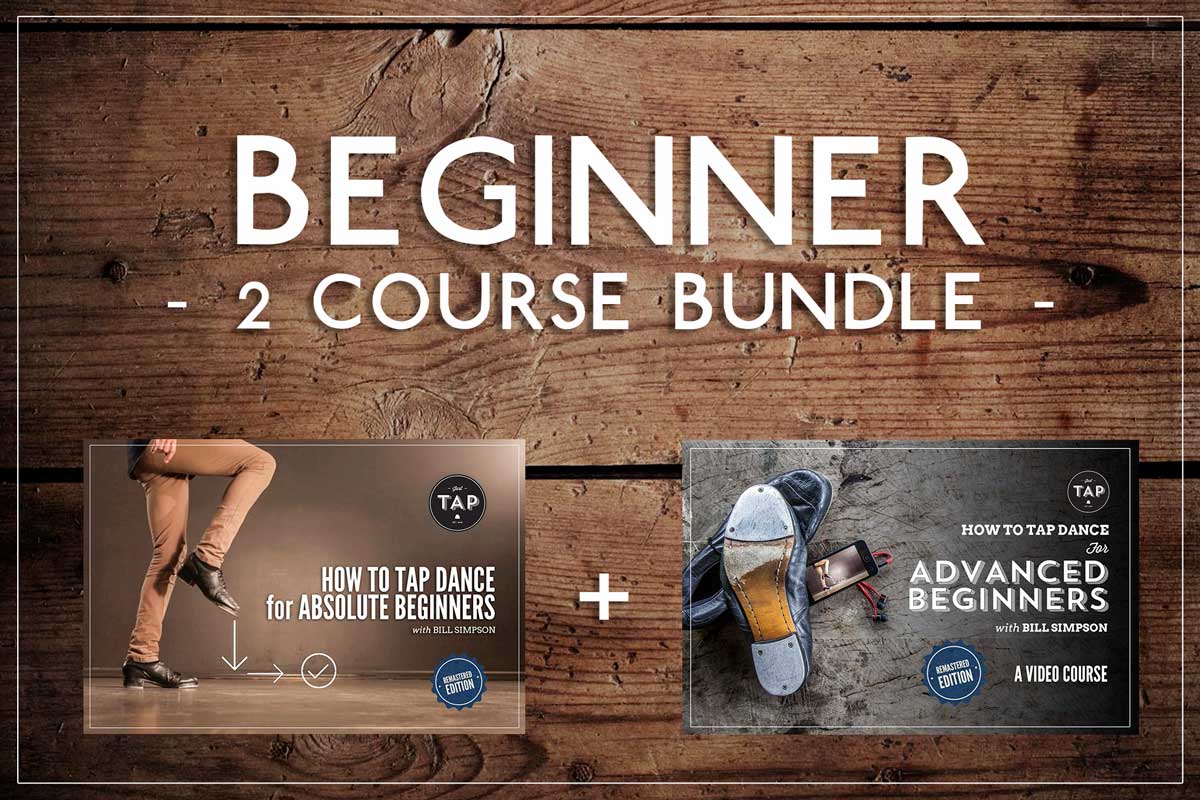
Tap Dance Resources

Scroll down for a bunch of useful information about getting started in Tap Dance (including recommendations for shoes, flooring and other nifty tools). For those keen to read up about tap dance and its history, we’ve also included a list of books that will keep you busy for quite some time.
So you know, some of the products links may result in us receiving small commission on purchases made. We only recommend products we use and love.
Happy tapping!
The course is currently OPEN for registrations.
For a limited time.

Getting Started in Tap Dance
You don’t need much to get started in tap dance (not even tap shoes). Just a little space to move around.
But if you’re keen to continue the journey in tap, then you’ll want to start thinking about setting yourself up with a few important items, including:
TAP SHOES
PRACTICE FLOOR
METRONOME
MUSIC PRACTICE TOOL (For adjusting speed)
I’ve done a lot of research into all of these, and have tried many different options.
Here’s the stuff I use and recommend:

TAP SHOES:
If you’re keen to continue your journey in tap dance, then a quality pair of tap shoes are a non-negotiable investment. They are the tools that bring your instrument to life, and quick become good friends. I’ve tried a lot of tap dance shoes in the past, and have listed some favorites below. If you can, I recommend getting to a dance store and trying some on in person.
MY PICK: STARTER SHOE / ALL ROUNDER: BLOCH ‘RESPECT’ LACE UP OXFORD
A fantastic shoe, worn by both men and women. Comfortable, durable and well priced. I’ve loved my ‘RESPECTS’, and have happily recommended them a lot over the years. A perfect starter shoe, that will last.
Also check out: CAPEZIO ‘Cadence’
MY PICK: HIGHER LEVEL / PROFESSIONAL SHOE: BLOCH ‘JASON SAMUELS SMITH’ OR CAPEZIO ‘K360’
Once you get to the Intermediate / Advanced level, you find that something with a little more ‘gumption’ is required, and neither of these options will disappoint. I’ve worn and loved them both.
JSS: I wore the ‘J-SAMS’ for 5+ years, and love the built up sole, the comfort, the style and the deep sound these shoes can pull from the floor. They’re quite heavy – some may find too heavy – but I personally like a heavier shoe. A great, very well priced option for Intermediate, Advanced or Pro Tap dancers.
K360: The global standard of professional Tap Dance shoe. Strong, durable and magical to dance in (especially once they’re ‘broken in’). They’re a little tougher than the J-SAMS, and take a little longer to take shape around your foot, but may well last you longer as a result.
You really can’t go wrong with either, I feel.
Note: All of the above are unisex options. A traditional ladies heeled tap shoe is also a solid option, and many choose these for the specific look. It’s all personal preference and either way is great.
ALSO WORTH A LOOK…
Artefyl – (What I’m currently wearing – my tan Tap Boots). Beautiful custom-made tap shoes and tap boots. The company is based in Madrid, but have very reasonable worldwide shipping rates. Again, tell them I sent you
~ SHOE FAQ ~
Do I NEED Tap shoes?
Not strictly speaking. If you’re a first timer, start off with shoes you already own – ones that have the hardest sole possible.
That said, there is nothing quite like your first pair of Tap shoes. Once you’ve tested the water and are ready to commit to your tap dance journey, then a quality pair of Tap shoes is the next step. Rarely a regretted investment, your Tap shoes will quickly become close friends
Where do I get tap shoes from?
There are lots of great online retailers, but most dance stores will stock Tap shoes (Bloch & Capezio are the most common dance shoe brands, stocked in dance shops all over the world – see above for more options).
Are ‘split-sole’ Tap shoes good for beginners?
The short answer: No. I don’t think they’re good for anyone.
As the name suggests, split sole shoes don’t have a continuous hard sole from the top to bottom of the shoe, and thus allow the foot to be pointed freely. While some styles of Tap may call for this, I personally feel that a full-sole Tap shoe is better for Tap dancers of all levels; split-sole shoes can end up feeling flimsy, and not supportive to the feet. Avoid, friends.

TAP PRACTICE FLOORS
While a professionally made tap floor is handy to have, you can easily make your own. A simple piece of plywood (minimum 1m x 1m) purchased from your local hardware store, together with some rubber, foam or even a yoga mat stuck to the underside will do the trick! Keep in mind, tap dancing on wood in a small space can be somewhat deafening, for you and your neighbors.
WHAT I USE:
I call this the ‘noise cancelling’ option; try laying a plastic floor protector (the kind that would go under an office chair) under some carpet or lock-together camping-style foam padding or some yoga mats. This will deaden the sound enough to keep the neighbors happy, but will still allow you to clearly hear the sound of the taps. Bliss.
Option 2 —> Commercially Available Floors.
There are a few good tap floor options around; check out FasFoot as a starting point. Their floors are durable, sound and feel great, are easy to store and come in a range of different colors and sizes, though I find them quite loud in a small space. They’re a US based company, and so the international shipping rates are hefty if you’re outside the USA, but aside from that, the FasFoot is a great floor that will last. Tell Eric I sent you, and kindly request that he responds to my email.
Also check out Showworks (Australia-Based), O’Mara and Practice Pads 🙌
THE RULE: Never tap dance directly on concrete.
Always be safe and kind to your body.

METRONOME
What’s a metronome? A nifty device used to keep time / hold a tempo. A metronome is a great practice tool, and one that I recommend to all my students when getting started. This will help you to chart your progress when practicing, and see that you’re actually speeding up!
A traditional ticking metronome will certainly do the trick, but there are some great apps that will give you some great flexibility and functionality…
Free options:
For IOS / iPhone users: Pro Metronome or Precision Metronome and Timer.
For Android: Pro Metronome
A paid option (well worth the small cost):
TONAL ENERGY TUNER & METRONOME, available for IOS and Android.

MUSIC PRACTICE
(Speeding up / Slowing Down)
The first app I go to: Anytune Pro (IOS only)
As Tap dancers, sometimes we need to slow down or speed up our music (without changing pitch) to maximize our practice time. ‘Anytune’ does this and so much more. It’s absolutely packed with features which you can delve into, but it’s also user-friendly if you’re happy to stick with the simple stuff. I personally love that you can put markers throughout your tracks so that you can quickly come back to these specific time-codes, and jump between them.
It’s awesome. Perfect for practicing, teaching or choreographing. I use it everyday.
It’s available for both IOS and Android.
The downside: Anytune Pro (IOS) doesn’t seem to have an integration with streaming music services such as Spotify and Apple Music. As many of us consume music in this way, an app compatible with these services is crucial for the modern dancer. Interestingly, the Android version does seem to have this functionality.
We’re currently on the hunt for an alternative with Spotify and Apple Music functionality. If you’ve found one, let us know!

OTHER THINGS
to have handy...
Water
Towel
Mirror (the bigger the better)
Notebook
Video camera
With these tools at the ready, you’ll be all set for a fulfilling tap dance adventure, now and into the future.

BOOKS
On Tap Dance and History
These published works will no-doubt keep the avid reader busy, with plenty of amazing tap dance stories, history and reference information to dive into. I’ve found each of them interesting and/or helpful on my journey.
In no particular order:
TAP! The Greatest Tap Dance Stars and Their Stories 1900-1955 by Rusty Frank
Tap Dancing America: A Cultural History by Constance Valis Hill
What the Eye Hears: A History of Tap Dancing by Brian Seibert
Tapworks: A Tap Dictionary and Reference Manual by Beverley Fletcher

That’s all for now, friends.
Have you found a nifty Tap resource that should be included on this page? Let us know!

More about 'Just TAP'
TAPTOPIA'S ACCLAIMED VIDEO COURSE SERIES
Since 2016, Just TAP has helped people of all ages from all over the world to build confidence, vocabulary, range and enjoyment of the art of Tap dance. 4500 students and counting. Click each image to find out more:
ALSO AVAILABLE AS PART OF:
"You won't get speed if you don't have technique, and Bill's courses provide the foundations of technique brilliantly."
- Phil, UK
"Bill does a wonderful job taking you through each step as if he is right there with you."
- Jeremy, USA
What others are saying
"The video format is perfect for me. If followed correctly, there is really no opportunity to get lost or make technical mistakes."
- GLEN, Just TAP Student (Course 1 & 2)
“The overall production quality is perfect, as is the clarity of the content. I felt I was 100% guided.”
- ALLESANDRA, Just TAP Student (Course 1 & 2)
“The Just TAP courses are awesome! They're teaching me so much. Thank you for putting a great product out there.”
- COURTNEY, Just TAP Student (Course 1 & 2)
"I continue to be thrilled with all these new discoveries I am making in my tap abilities, and the way Bill teaches it all makes it totally achievable.”
- RYAN, Just TAP Student (Course 1 & 2)
"I could not have found a better tap video tutorial. The commentary and tips are brilliant.”
- DALE, Just TAP Student (Course 1 & 2)

Words About Bill
"Bill Simpson is an excellent tap mentor - having taken many classes with Bill, I highly recommend everyone to try them out. Not only does he share his amazing footwork, he brings the whole body experience to a class to ensure you leave as a better dancer internally, externally and from head to toe. From the care of his students to his diverse range of musicality and experience, he brings a wealth of knowledge to any class experience."
- Ella Lehaf, Producer of Australian Tap Dance Festival

"As a tap dancer of 30 years I have come across a huge range of artists in my time. Upon meeting Bill Simpson I was blown away by his uniqueness. His class environment is so warm and welcoming to any age or ability of tap. One thing I particularly love about his classes is that he helps you forget what is going on in your outside world. To be able to hold the attention of the class for that long requires a very special skill, which Bill is gifted with. Along with possessing an amazing style, his creativity, musicality and choreographic range is next to none."
- Shannon Zammit, Student

"Besides being an award-winning tap dancer, theatrical tour de force, and master technician (which he is), Bill Simpson is a generous educator and clear communicator, bringing dynamic freshness to classic styles with respect to the roots of the craft. All while nurturing what I consider to be the most important ingredient - the joy of dance."
- Eden Read, Tap Dance Educator
We recognize the many nations and cultures that shape and contribute to
the art of tap dance, but acknowledge tap as an African-American
art-form at its roots, which directly influenced the dancers of the
‘golden era’ of Hollywood, in-turn popularizing tap dance across the
world.
We also acknowledge the First Nations Peoples of Australia - the
traditional owners of the land on which we join you from - and pay
respects to their elders, past and present.










